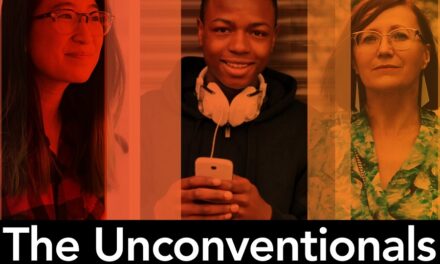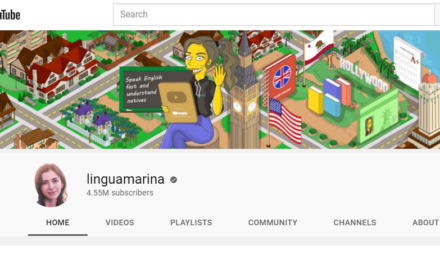As “always on” audience-driven engagement further infiltrates marketing consciousness, those brands that want to create high quality content more efficiently–and strategically take into account the diverse interests of their audience–are starting in-house content studios. These operations from the likes of Unilever, Nestlé, Pepsi, L’Oréal, Marriott, Chobani, and KIND, generate a variety of content forms and types, from packaging, articles, photography, and social posts to compelling videos, podcasts, live streaming events, immersive virtual reality experiences and more–with their audience’s interests placed first. They are led by trailblazing, first-generation content leaders whose early development and advocacy of the discipline has infused them with a valuable foundation of specialized experience. In 2018 content studios will flourish, but there will be some things to watch out for.
First-Generation Content Leaders Advance and Organizations Restructure
In 2018, as content marketing drives an increasing amount of valuable business outcomes, budgets grow and the discipline moves from pilot to core business driver, first-generation content marketers will rise to higher echelons in their organization. With this recognition, content leaders will start to hold the same authority as brand leaders, driving brands to act more like publishers. Though in scarce supply, content experts will be in demand for their specialized skills – the ability to lead a growth strategy that includes content strategy, content operations and studios, but encompasses audience insights, distribution, technology, training and development, and concrete, measurable success factors.
As content studios become mature, they will move from being experts in producing high quality content at a tactical level, to a more strategic mission. They will be judged by how well the content uniquely fulfills a functional and/or emotional need along the audience’s journey. And of course each individual has a unique journey and set of needs, so the content studio will be on the frontline of providing the content juice needed to fuel personalization. Every piece of content will have a series of adaptations that can allow it to better serve the individual. The connection to the journey should give the studio permission to get involved in the content distribution plan. Because there’s no point just having content sit in the so-called content hub. The content needs to travel to meet the individual at the right moment in their journey, in the right form, and channel.
This also has significant implications for the brand strategy. Typically, brand strategy thrives on a single-minded idea for a large audience. However, the strategic use of content and personalization drives a series of individual experiences. The idea of a single-minded “public brand” view will start to shift to a multi-faceted “private brand” view, tailored to the needs, wants, and desires of the individual. It will become harder to tell the difference between the brand strategy and content strategy.
Content leaders will need to be adept at collaboration and education with their marketing and brand counterparts. The content leader will need to train marketers in how to think about content, how to develop strategy, be audience focused, distribute, and how to measure success. They may encounter resistance from marketers who will want to develop their own content, rather than have content de-coupled from their other activities. Content studios should not develop all content, but care should be taken to define the types of content it produces, and what should be developed elsewhere.
Newly Gained Trust in Artificial Intelligence Bolsters Studio Build-Outs, Buoys Buy-In from Procurement and Finance Chiefs
Savvy brands today recognize their owned and earned channels as coveted platforms that can be optimized to engage with their audiences on a much deeper level. That’s why paid media budgets will shift to fund content capabilities and approaches. They also know their audience can’t be addressed simply as segments, and to reiterate, must be viewed as individuals who have varying tastes, interests, and reasons for their loyalty.
For the first time, in marketers’ arsenals there will be both extensive data, and the artificial intelligence (AI) and machine learning tools to leverage that data in a meaningful, scalable way. The technologies are automating content marketing, particularly when it comes to tracking individual consumer behaviors and interests, and delivering relevant content based on those actions. In-house content studios are embracing these tools and this shift, accelerating it in 2018 rather than attempting to slow it down.
AI is enabling content of all kinds to be personalized on an individual basis across channels, driving repeat engagement and generating robust data-supported analytics that clearly show how loyal brand relationships with customers lead to increases in revenue. But historically there’s been scant trust in AI to leverage brand assets in a way that isn’t “click-baity,” doesn’t erode brand equity, or fails in delivering business results. As content leaders rise to the forefront of organizations and have responsibility for contributing to the bottom line, the ability to clearly show how AI-driven platforms support in-house content studio revenue goals will bolster their growth, and secure a stamp of approval from procurement and finance chiefs.
A Shakeout of Content Studio Models is Underway, Unnerving Some
While AI may aid with actual content creation some time in the future, it will continue to be a challenge for brands to strike the right balance between developing content that resonates with audiences at scale but also creates goodwill towards the brand. As brands bring content operations in-house, those partnering with agencies for content development and strategy are going to reevaluate, and in some cases, restructure and renegotiate these content partner relationships. Their use of content partners may become more selective and specific, aligning with those that play to and support the brands’ current content marketing strengths and capabilities, but can more clearly show ROI. This push to bolster in-house content teams – and hold them accountable to key performance indicators – and the simultaneous filtering of agency services, will make all parties much more focused, vigilant, and potentially reassess their business pipelines and plans on the horizon.
In 2018 marketers are seeking the benefit of owned and earned channels where they are able to increase their content investments–and shift paid media investment to grow their own content development. As compared to paid advertising, content investment is lower, they can find deeper levels of content engagement, and ROI multipliers are significantly higher. This trend will only accelerate as content measurement efforts become more established, and content studios flourish.






